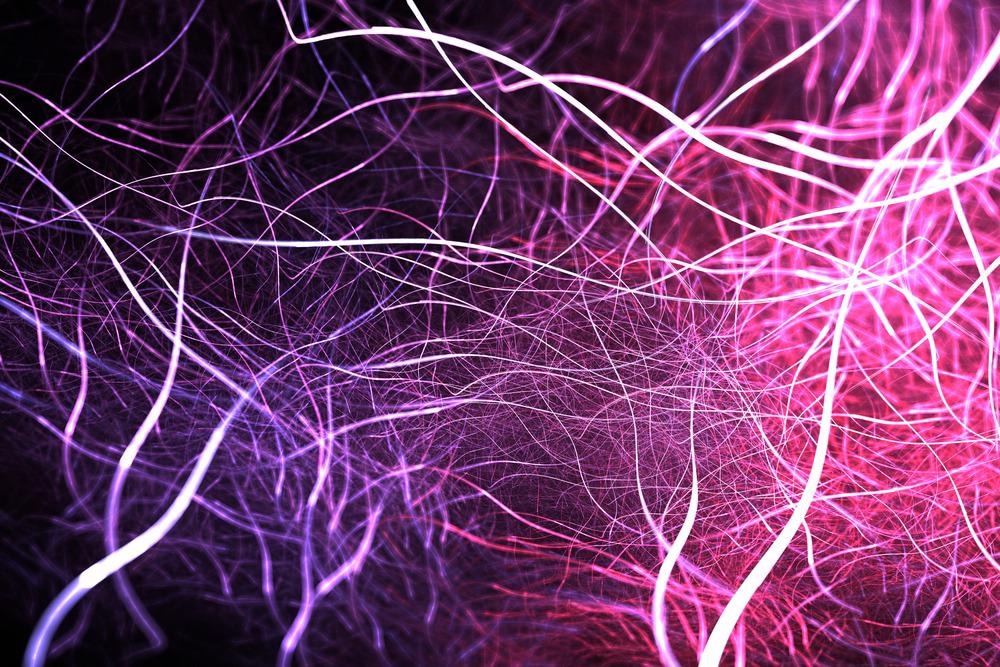In an article published in the journal Biomedical Materials, researchers set out to produce environmentally friendly, high-performance electrospun nanofibers from poly(epsilon-caprolactone) (PCL), chitosan (CS), and κ-carrageenan (κ-C) using marine polysaccharides.

Study: Environmentally friendly fabrication of electrospun nanofibers made of polycaprolactone, chitosan and κ-carrageenan (PCL/CS/κ-C). Image Credit: Jurik Peter/Shutterstock.com
Following one week of incubation, a simple cell viability analysis utilizing ST-2 cells revealed cell growth in all manufactured fiber mats, indicating their appropriateness as suitable options for bone tissue engineering and anti-inflammatory purposes.
Electrospinning Technology
Electrospinning is a well-established process for creating fibrous mats by creating fibers of various diameters and having substantial polymers. A stream of precursor solution (or molten polymer) is created and finally placed on the surface of the hoarder to form fibers by providing a high-intensity electric field between both the precursor solution (or molten polymer) and the ground collectors.
In reality, a range of variables such as liquid or melting qualities, electrospinning equipment settings, and ambient conditions may all impact the shape and attributes of fibers.
The impact of these three types of parameters on the shape and characteristics of fibers has received a lot of attention. The use of novel plastics, polymer blends, and liquid mixes for electrospinning, on the other hand, necessitates significant study to uncover the impact of such multiple processes on fiber creation.
Synthetic Polymers and Their Properties
Poly(-caprolactone) (PCL), a synthetic polymer authorized for therapeutic use by the United States Food and Drug Administration (FDA), is extensively utilized in the area of biomedical products, particularly as a typical polymer for spin-coating techniques.
PCL has various significant features, like strong mechanical qualities, biocompatibility, and non-cytotoxicity, making it useful for tissue repair, bone- and soft-tissue restoration, and is often combined with other biodegradable polymers.
Chitosan and κ-carrageenan are both organic polymers. For its bioactivity, degradation rate, and antimicrobial activities, chitosan is also extensively used as a biocompatible material. κ-carrageenan, a straight sulfated polysaccharide, is mostly utilized as a food ingredient.
κ-carrageenan has just begun to be explored as a biocompatible material for biomedical applications due to its structural qualities, gelatinization ability, and structure comparable to glycosaminoglycans found in the natural extracellular matrix (ECM).
Recent studies have used an FA/AA solvent combination for electrospinning polycaprolactone and chitosan mixed nanomaterials. Some scientists immersed κ-carrageenan and other polymers in polar and non-polar/polar solvent solutions to electro-spin mix nanoparticles.
The Focus of the Research
The focus of this research was to improve the biocompatibility of polycaprolactone through the inclusion of marine polysaccharides of diverse nature like κ-carrageenan and high molecular weight (HMW) chitosan and to prevent the existence of trace amounts of toxic organic solvents in the acquired fibers.
Furthermore, the team aimed to improve the mechanical characteristics of electrospun fibers made from polysaccharide compositions and to assess any possible biological reaction of the fibers without using any chemical agents or additives.
Lastly, an initial cell viability experiment was performed to compare the behavior of fiber mats created from a mixture that had been held for thirty days to the earlier versions to evaluate the shelf-life capabilities of the utilized suitable solvent.
By adjusting the FA/AA ratio in the solvent solution, electrospun mix nanofibrous mats, including polycaprolactone, chitosan, and κ-carrageenan (PCL/CS/-C), were effectively generated. The FA/AA ratio was shown to be essential in the properties and performance of the fiber mats, with a ratio of 7:3 exhibiting a unique combination of improved wettability and Young's modulus.
Important Findings
The mixture was shown to be viable at storage settings of 20 oC for thirty days, making it acceptable for manufacturing electrospun nanoparticles after an extended storage period.
Absorption of the NF7:3 specimens in various media suggested a probable bioactive reaction. Furthermore, cell viability studies revealed no adverse effects. Cells sown on specimens could replicate and disseminate on the fibers over time.
The inclusion of κ-carrageenan increased the dissolution rate of the polymers, which in conjunction with high molecular weight chitosan, supplied the solidity needed for the solvent to be kept at 20 oC for an extended time without influencing the biochemical reaction.
The discovered chitosan and κ-carrageenan, including polycaprolactone fibers with calcification potential, must be studied further for use in bone regeneration and blood clotting.
Reference
Vargas-Osorio, Z., Ruther, F., Chen, S., & Sengupta, S. (2022). Environmentally friendly fabrication of electrospun nanofibers made of polycaprolactone, chitosan and κ-carrageenan. Biomedical Materials. Available at: https://doi.org/10.1088/1748-605X/ac6eaa
Disclaimer: The views expressed here are those of the author expressed in their private capacity and do not necessarily represent the views of AZoM.com Limited T/A AZoNetwork the owner and operator of this website. This disclaimer forms part of the Terms and conditions of use of this website.